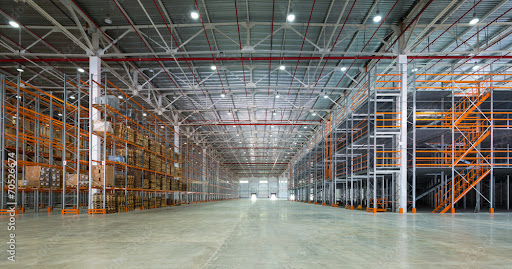Understanding the Real Difference Between Pallet Racking and Shelving
Introduction
When it comes to efficient industrial storage solutions, Industrial Products Plus understands the importance of distinguishing between two key systems: pallet racking and Shelving. By delving into the unique characteristics and functionalities of these systems, you can make informed decisions tailored to your specific storage needs. Keep reading to learn more!
What is Pallet Racking?
Pallet racking systems, a cornerstone of warehouse storage, offer a reliable and organized approach to storing goods. Designed to handle heavy loads, pallet racking maximizes vertical space while ensuring convenient accessibility. With options such as selective, drive-in, and push-back systems, Industrial Products Plus provides versatile pallet racking solutions. These systems boast exceptional load-bearing capacity and effective weight distribution, making them the go-to choice for heavy-duty storage requirements.
What is Industrial Shelving?
Industrial Shelving takes a different approach to storage solutions, offering flexibility and customization. With options like boltless, wire, and mobile shelving, Industrial Products Plus caters to the diverse needs of various industries. Ideal for smaller items and lighter loads, industrial shelving provides quick and easy access to goods. While not suitable for bulk storage and warehouse environments like pallet racking, industrial shelving excels in versatility and adaptability.
Key Differences Between Pallet Racking and Shelving
To truly understand the real disparities between pallet racking and Shelving, it’s important to examine their structural differences, storage capacities, accessibility, and versatility.
Structural Differences
Pallet racking systems are built with robust construction, ensuring durability and the ability to handle heavy loads. The sturdy frames and cross beams provided by Industrial Products Plus guarantee long-lasting performance. On the other hand, industrial shelving systems are lightweight and offer adjustable shelves for smaller items. Pallet racking systems provide exceptional stability and load-bearing capabilities, making them ideal for palletized goods.
Storage Capacity and Accessibility
Pallet racking systems are designed to maximize space utilization by efficiently storing large and heavy items. With high load capacities, these systems optimize vertical space and provide easy access to stored goods. Industrial Shelving, though limited in load-bearing capacity, offers excellent accessibility for smaller items. The open shelves enable quick identification and retrieval, making it suitable for industries that require frequent item selection and order picking.
Versatility and Flexibility
When it comes to versatility, industrial shelving shines as a flexible storage solution. With various shelving options and configurations available, it can adapt to a wide range of storage needs. However, pallet racking systems excel in bulk storage and warehouse environments. Their efficient storage of palletized goods makes them an ideal choice for industries dealing with larger quantities and heavier items.
Determining Factors for Choosing Pallet racking or Shelving
Choosing between pallet racking and industrial shelving depends on several factors, including the type of goods and inventory, space utilization and layout, and operational considerations.
Types of Goods and Inventory
Consider the size, weight, and quantity

Service médical à domicile de Medici Generici à Rome
Notre équipe fournit un service de soins de santé à domicile, garantissant professionnalisme et confort pour les patients à Rome.
of the items mymedic.es to be stored. Pallet racking systems are optimal for large, heavy, and palletized goods, while industrial shelving is better suited for smaller items and lighter loads.
Space Utilization and Layout
Evaluate the available space and layout of your storage area. Pallet racking systems maximize vertical space, making efficient use of warehouse dimensions. Industrial shelving, with its flexible configurations, allows for better customization in limited spaces.
Operational Considerations
Factors such as inventory turnover, order picking methods, and equipment play a crucial role. Pallet racking systems are advantageous for efficient inventory management and handling with forklifts. Industrial Shelving, with its easy access and quick identification, supports industries requiring frequent item selection.
Conclusion
Understanding the differences between pallet racking and industrial shelving is paramount when selecting the right storage solution for your needs. Industrial Products Plus recognizes the unique requirements of your industry and offers tailored solutions. pallet racking systems excel in heavy-duty storage and warehouse environments, while industrial shelving offers versatility and customization for smaller items. By considering your specific storage needs and partnering with Industrial Products Plus, you can make an informed decision that maximizes efficiency and productivity in your industrial storage setup. Call us at 714-641-8100 to learn more about how we can help.
FAQs
- What is the main difference between pallet racking and shelving?
A. Pallet racking is designed for heavy loads and efficient storage of larger items, utilizing vertical space and offering high load-bearing capacity. Shelving, on the other hand, is more suitable for smaller items and lighter loads, providing easy access and customization options. - Which storage solution should I choose for my business?

Médical
Texte additionnel sur le thème de la médecine
400;”>A. The choice between pallet racking and shelving depends on factors such as the type of goods you need to store, the available space, and your operational requirements. Pallet racking is ideal for bulk storage and warehouses, while shelving offers versatility and adaptability for various storage needs.
A. Absolutely! In fact, combining pallet racking and shelving systems can provide a comprehensive storage solution. You can use pallet racking for large, heavy items and shelving for smaller or frequently accessed items. This combination allows for efficient utilization of space and optimal organization in your storage facility.

